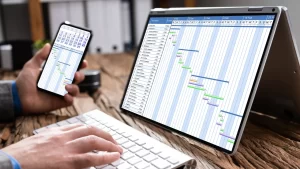Implementing fixed asset management software can streamline asset tracking, improve maintenance processes, and ensure accurate financial reporting.
However, to fully benefit from this software, businesses need to approach implementation strategically.
In this guide, we’ll walk you through the key steps to successfully get started with fixed asset management software, from evaluating your needs to monitoring performance.
Step 1: Assess Your Asset Management Needs
Before choosing a fixed asset management software, it’s essential to understand your current asset management processes and identify the specific challenges you’re looking to address.
Consider the following:
- Current Processes: Evaluate how your business currently tracks, maintains, and reports on assets. Are you using spreadsheets or outdated software?
- Pain Points: Identify common issues such as misplaced assets, lack of real-time tracking, or errors in financial reporting.
- Goals: Define what you hope to achieve with the software—better tracking, improved maintenance scheduling, or more accurate depreciation calculations.
Having a clear understanding of your needs will guide you in selecting the right software and configuring it to meet your business requirements.
Step 2: Choose the Right Software
Selecting the right fixed asset management software is crucial for a successful implementation.
To choose the best software for your business, consider these factors:
- Scalability: Ensure the software can grow with your business and handle an increasing number of assets over time.
- User-Friendliness: Choose a solution with an intuitive interface that is easy for both technical and non-technical users to navigate.
- Integration Capabilities: The software should integrate seamlessly with other business systems, such as ERP, accounting, or inventory management platforms.
To make an informed decision, request demos or trial versions of the software to evaluate its features and usability.
Involve key stakeholders during the evaluation process to ensure the software meets everyone’s needs.
Step 3: Prepare Your Data for Migration
Data migration is a critical step in the implementation process.
Before migrating your existing asset data to the new software, it’s important to clean and organize the information. Follow these steps:
- Data Review: Check for inaccuracies, inconsistencies, or outdated information in your existing asset records.
- Data Cleaning: Remove duplicate entries and update missing information to ensure data integrity.
- Data Structuring: Organize your asset data into a clear structure that aligns with the fields and categories in the new software.
Creating a detailed data migration plan will ensure a smooth transition and minimize disruptions during the implementation process.
Step 4: Set Up the Software and Configure Settings
Once your data is ready, set up the software according to your business’s requirements. Start by configuring the following:
- User Roles and Permissions: Define who can access or edit asset data. For example, administrators may have full access, while other users may have restricted permissions based on their roles.
- Workflows: Set up workflows for asset tracking, maintenance scheduling, and reporting to match your existing processes.
- Integrations: Connect the software to other business systems (e.g., ERP or accounting platforms) to streamline data sharing and avoid information silos.
Proper setup and configuration are key to ensuring that the software operates effectively and aligns with your business processes.
Step 5: Train Your Team
Training is crucial for successful adoption of the software. Even the best software won’t deliver results if users don’t know how to use it effectively.
To ensure a smooth transition:
- Provide Comprehensive Training: Offer in-depth training sessions for all users, focusing on core features and workflows relevant to their roles.
- Create Training Resources: Develop resources like user manuals, video tutorials, and FAQ documents that employees can refer to as needed.
- Offer Ongoing Support: Provide a support structure for users to ask questions and resolve issues as they become familiar with the software.
Training equips your team with the knowledge and skills they need to use the software confidently and effectively.
Step 6: Conduct Testing and Optimize Configurations
Before fully rolling out the software, it’s important to test it to ensure everything is functioning as expected. Here’s how to do it:
- Run Test Cases: Create scenarios based on real business operations to verify that the software performs correctly. Test asset tracking, maintenance scheduling, and financial reporting.
- Gather User Feedback: Ask users to share their experience and identify any challenges or areas of improvement.
- Optimize Configurations: Make necessary adjustments based on the test results and user feedback to enhance the software’s performance.
Testing helps identify and resolve potential issues early, ensuring a smoother launch and higher user satisfaction.
Step 7: Monitor Performance and Make Continuous Improvements
After the software is live, continuous monitoring is essential to ensure it continues to meet your business’s evolving needs. Focus on the following:
- Track KPIs: Monitor key performance indicators such as time saved on asset tracking, accuracy of financial reporting, and reduction in asset downtime.
- Review User Feedback: Regularly gather feedback from users to identify areas where the software can be further optimized.
- Update Configurations as Needed: Make changes to configurations or workflows based on performance reviews and feedback to keep the software aligned with your business goals.
Continuous improvement helps you get the most out of your software investment and supports long-term success.








